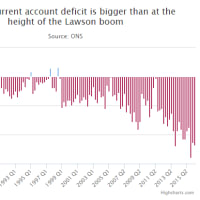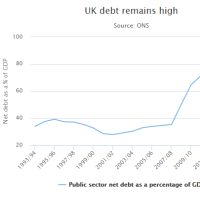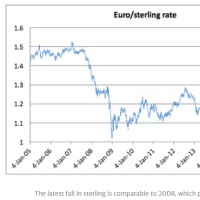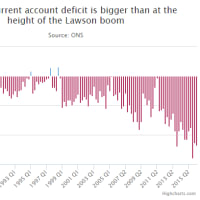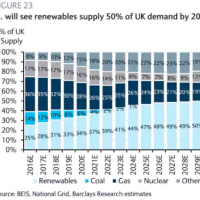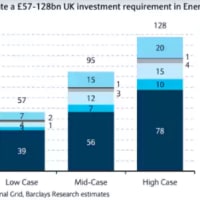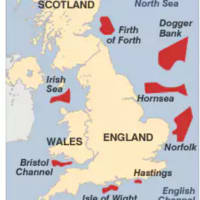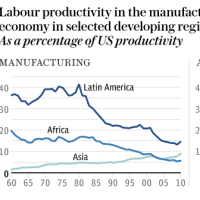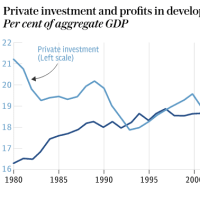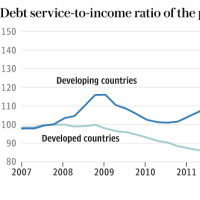The end of petrol and diesel cars? All vehicles will be electric by 2025, says expert
(ガソリン・ディーゼル車が終了?)
Ambrose Evans-Pritchard
Telegraph: 14 MAY 2017 ? 8:58PM


(ガソリン・ディーゼル車が終了?)
Ambrose Evans-Pritchard
Telegraph: 14 MAY 2017 ? 8:58PM
No more petrol or diesel cars, buses, or trucks will be sold anywhere in the world within eight years. The entire market for land transport will switch to electrification, leading to a collapse of oil prices and the demise of the petroleum industry as we have known it for a century.
ガソリンまたはディーゼルの自動車、バス、トラックは、8年以内に世界中で売られなくなるでしょう。
陸上移動のための市場は全て電気に切り替わり、石油価格の大暴落と過去一世紀に亘って知られたガソリン産業の崩壊をもたらします。
This is the futuristic forecast by Stanford University economist Tony Seba, founder of technology consultants RethinkX . His report, with the deceptively bland title Rethinking Transportation 2020-2030, has gone viral in green circles and is causing spasms of anxiety in the established industries.
これはスタンフォード大学のエコノミストで、テクノロジー・コンサルティング会社、RethinkXの創設者のトニー・セバ教授が出した未来予想です。
『2020-2030年の輸送再考』などという内容とは裏腹な何気ないタイトルが付けられた彼のレポートは、環境保護団体の間で大流行となり、既存業界では不安をもたらしています。
Prof Seba's premise is that people will stop driving altogether. They will switch en masse to self-drive electric vehicles (EVs) that are ten times cheaper to run than fossil-based cars, with a near-zero marginal cost of fuel and an expected lifespan of 1m miles.
セバ教授は皆一斉に運転を止めると予想しています。
そして一斉に運用コストが化石燃料の自動車よりも10倍も易く、燃料費がほぼゼロであり、走行可能距離100万マイルという自走式電気自動車に切り替えるそうです。
Only nostalgics will cling to the old habit of car ownership. The rest will adapt to vehicles on demand. It will become harder to find a petrol station, spares, or anybody to fix the 2,000 moving parts that bedevil the internal combustion engine. Dealers will disappear by 2024.
懐古趣味者だけが自動車の所有という古い習慣にしがみ付くことになります。
他は皆、求められる乗り物になじむでしょう。
ガソリンスタンドやスペア、そして内燃エンジンを悩ませる2,000もの動く部品を直せる人物を見つけるのは益々困難になるでしょう。
Cities will ban human drivers once the data confirms how dangerous they can be behind a wheel. This will spread to suburbs, and then beyond. There will be a "mass stranding of existing vehicles". The value of second-hard cars will plunge. You will have to pay to dispose of your old vehicle.
データが人による運転の危険性を立証すると、都市はそれを禁止するでしょう。
これは郊外、そして更に遠くまで広がります。
「既存の自動車の集団座礁」が起こるでしょう。
中古車の価値は暴落します。
自家用車を捨てる為にお金を払わなければならなくなるでしょう。
It is a twin "death spiral" for big oil and big autos, with ugly implications for some big companies on the London Stock Exchange unless they adapt in time.
大手の石油会社と自動車会社にとっては双子の「死のスパイラル」であり、手遅れにならない内に適応しない限り、ロンドン市場に上場する大手企業の一部にとっては厄介な意味合いを持っています。
The long-term price of crude will fall to $25 a barrel. Most forms of shale and deep-water drilling will no longer be viable. Assets will be stranded. Scotland will forfeit any North Sea bonanza. Russia, Saudi Arabia, Nigeria, and Venezuela will be in trouble.
原油の長期価格は25ドルまで下落するでしょう。
シェール油田や深海油田の大半は持続不可能になるでしょう。
座礁資産になります。
スコットランドは北海油田バブルを失います。
ロシア、サウジアラビア、ナイジェリア、ベネズエラも大変なことになります。
It is an existential threat to Ford, General Motors, and the German car industry. They will face a choice between manufacturing EVs in a brutal low-profit market, or reinventing themselves a self-drive service companies, variants of Uber and Lyft.
フォード、GM、ドイツの自動車産業は存亡の危機に見舞われます。
無慈悲なほど儲からない市場で電気自動車を作るか、UBErやLyftのような自走サービス業者に転身するかの選択を迫られるでしょう。
They are in the wrong business. The next generation of cars will be "computers on wheels". Google, Apple, and Foxconn have the disruptive edge, and are going in for the kill. Silicon Valley is where the auto action is, not Detroit, Wolfsburg, or Toyota City.
彼らは間違った商売をしているのです。
次世代の自動車は「タイヤ付コンピューター」になるのです。
グーグル、アップル、フォックスコンには破壊的優位性がありますし、止めを刺しに来るでしょう。
デトロイトでも、ヴォルフスブルクでも、豊田でもなく、シリコン・バレーこそが舞台になるのです。
The shift, according to Prof Seba, is driven by technology, not climate policies. Market forces are bringing it about with a speed and ferocity that governments could never hope to achieve.
セバ教授によるとこのシフトは、環境保護政策ではなく、テクノロジーが原動力となるとのこと。
市場の力が、政府が達成出来ると期待することも出来ないようなスピードと勢いを以って実現しようとしているそうです。
"We are on the cusp of one of the fastest, deepest, most consequential disruptions of transportation in history," Prof Seba said. "Internal combustion engine vehicles will enter a vicious cycle of increasing costs."
教授はこう語りました。
「僕らは歴史上、最も速く、最も深く、最も重大な輸送の途絶の一つを目前にしているんだな」
「内燃エンジンの乗り物はコスト増の悪循環に突入するよ」
The "tipping point" will arrive over the next two to three years as EV battery ranges surpass 200 miles and electric car prices in the US drop to $30,000. By 2022 the low-end models will be down to $20,000. After that, the avalanche will sweep all before it.
「転換点」は、電気自動車のバッテリーの走行距離が200マイルを突破し、米国での価格が3万ドルまで下落する今後2-3年の間に訪れるとのこと。
2022年までには低価格モデルが2万ドルまで値下がりするでしょう。
その後は、殺到が起こって向かうところ敵なしでしょう。
"What the cost curve says is that by 2025 all new vehicles will be electric, all new buses, all new cars, all new tractors, all new vans, anything that moves on wheels will be electric, globally," Prof Seba said.
「コスト・カーブによると、2025年までに全ての新しい乗り物が殿堂になるみたいだね。全ての新しいバス、全ての新しい自動車、全ての新しいトラクター、全ての新しいバン。輪っかで動く物は何もかも、世界的に、電動になるんだ」
"Global oil demand will peak at 100m barrels per day by 2020, dropping to 70m by 2030." There will be oil demand for use in the chemical industries, and for aviation, though Nasa and Boeing are working on hybrid-electric aircraft for short-haul passenger flights.
「世界の石油需要は2020年までに1億バレル/日でピークを迎えて、2030年までに7,000万バレルまで減るよ」
化学産業、そして航空業界向けの需要はあるでしょうが、NASAとボーイングは短距離旅客機向けにハイブリッドの研究を進めています。
Prof Seba said the residual stock of fossil-based vehicles will take time to clear but 95pc of the miles driven by 2030 in the US will be in autonomous EVs for reasons of costs, convenience, and efficiency. Oil use for road transport will crash from 8m barrels a day to 1m.
教授曰く、化石燃料を使う乗り物の残りがなくなるには時間を要するものの、米国では2030年までに1マイルの95%をコスト、利便性、効率の観点から自走式の電動の乗り物で移動することになるそうです。
陸上輸送向けの石油消費量は1日800万バレルから100万バレルまで激減するのだとか。
The cost per mile for EVs will be 6.8 cents, rendering petrol cars obsolete. Insurance costs will fall by 90pc. The average American household will save $5,600 per year by making the switch. The US government will lose $50bn a year in fuel taxes. Britain's exchequer will be hit pari passu.
電気自動車の1マイル当たりのコストは6.8セントになり、ガソリン式自動車を時代遅れのしろものにするでしょう。
保険料は90%下落するとのこと。
米国では平均世帯がこの切り替えによって、年に5,600ドルを節約することになるでしょう。
米政府は燃料税を年500億ドル失うでしょう。
英国の税収も同様です。
"Our research and modelling indicate that the $10 trillion annual revenues in the existing vehicle and oil supply chains will shrink dramatically," Prof Seba said.
「僕らのリサーチとモデリングによると、既存の自動車と石油のサプライチェーンによる10兆ドルの年間収入が激減するようだね」とセバ教授。
"Certain high-cost countries, companies, and fields will see their oil production entirely wiped out. Exxon-Mobil, Shell and BP could see 40pc to 50pc of their assets become stranded," the report said.
「一部の高コストな国や企業や分野は、自分達の石油生産が完全に消滅するのを見ることになる。エクソンモービルとかシェルとかBPとか、資産の40-50%が座礁するかも」と本レポートには記されています。
These are all large claims, though familiar those on the cutting edge of energy technology. While the professor's timing may be off by a few years, there is little doubt about the general direction.
エネルギー・テクノロジーの最先端に詳しい人には馴染みのある内容ですが、これは皆大胆な主張です。
教授の読みは2-3年ほど外れるかもしれませんが、全体的な方向については殆ど疑いようなしです。
India is drawing up plans to phase out all petrol and diesel cars by 2032, leap-frogging China in an electrification race across Asia. The brains trust of Primer Minister Narendra Modi has called for a mix of subsidies, car-pooling, and caps on fossil-based cars. The goal is to cut pollution and break reliance on imported oil, but markets will pick up the baton quickly once the process starts.
インドはアジア全域での電化レースで中国を一気呵成に追い抜かし、ガソリン車とディーゼル車を2032年までに段階的に廃止する計画を立てています。
ナレンドラ・モディ首相が信頼するブレインは、助成、カー・プール、そして化石燃料を使う自動車の制限を組み合わせることを呼びかけています。
目指すは大気汚染の改善と脱輸入車異存ですが、市場はこのプロセスが始まれば直ぐに乗って来るでしょう。
China is moving in parallel, pushing for 7m electric vehicles by 2025, enforced by a minimum quota for "new energy" vehicles that shifts the burden for the switch onto manufacturers. "The trend is irreversible," said Wang Chuanfu, head of the Chinese electric car producer BYD, backed by Warren Buffett's Berkshire Hathaway.
中国も並行して動いており、切り替えの負担をメーカーにシフトする「新エネルギー」自動車の最低割当をてこに、2025年までに電気自動車を700万台まで増やそうとしています。
「このトレンドは不可逆的ね」とウォレン・バフェット氏のバークシャー・ハサウェイの支援を受ける中国の電気自動車メーカー、BYDのWang Chuanfu社長は言います。
At the same time, global shipping rules are clamping down on dirty high-sulphur oil used in the cargo trade, a move that may lead to widespread use of liquefied natural gas for ship fuel.
同時に、国際的な輸送規則がカーゴ・トレードにおける有害な高硫黄石油へを取り締まりつつありますが、この動きは船の燃料向けLNGの利用拡大をもたらすかもしれません。
This is all happening much faster than Saudi Arabia and Opec had assumed. The cartel's World Oil Outlook last year dismissed electric vehicles as a fringe curiosity that would make little difference to ever-rising global demand for oil.
この全てがサウジアラビアとOPECの想定を遥かに凌ぐスピードで起こりつつあります。
OPECの世界石油展望は昨年、電気自動車など右肩上がりの世界的な石油需要に殆どなんの影響ももたらさない些末な好奇心として一蹴にしました。
It predicted a jump in crude consumption by a further 16.4m barrels a day to 109m by 2040, with India increasingly taking over from China as growing market. The cartel said fossils will still make up 77pc of global energy use, much like today. It implicitly treated the Paris agreement on climate targets as empty rhetoric.
また、インドが成長市場として中国を追い抜きつつあり、原油消費量は2040年までに1.09億バレルへと更に1,640万バレル/日も大幅に伸びるだろうと予測しました。
更に、化石燃料は今日とほぼ同じく、世界のエネルギー使用量の77%を占めるだろうとしました。
これはCOP21パリ合意の目標を無意味な美辞麗句として暗に扱っています。
Whether Opec believes its own claims is doubtful. Saudi Arabia's actions suggest otherwise. The kingdom is hedging its bets by selling off chunks of the state oil giant Saudi Aramco to fund diversification away from oil.
OPECが自分の主張を信じているかどうかは怪しいものです。
サウジアラビアの行動はその逆を示唆しています。
同国は石油からの多様化の資金源にすべく、巨大国営石油企業、サウジアラムコの株式を大量に売却してヘッジしています。
Opec, Russia, and the oil-exporting states are now caught in a squeeze and will probably be forced to extend output caps into 2018 to stop prices falling. Shale fracking in the US is now so efficient, and rebounding so fast, that it may cap oil prices in a range of $45 to $55 until the end of the decade. By then the historic window will be closing.
OPEC、ロシア、その他の産油国は今や圧力をかけられており、恐らく価格下落を止めるために2018年まで減産を延長せざるを得なくなるでしょう。
米国でのシェール・フラッキングは非常に効率的であり、非常に素早く回復しているため、2020年まで石油価格を45-55ドルの間に納めてしまうかもしれません。
その頃までに、歴史的なチャンスを逃すことになるでしょう。
Experts will argue over Prof Seba's claims. His broad point is that multiple technological trends are combining in a perfect storm. The simplicity of the EV model is breath-taking. The Tesla S has 18 moving parts, one hundred times fewer than a combustion engine car. "Maintenance is essentially zero. That is why Tesla is offering infinite-mile warranties. You can drive it to the moon and back and they will still warranty it," Prof Seba said.
専門家はセバ教授の主張について議論するでしょう。
テクノロジーの幾つものトレンドが最悪の事態で組み合わさりつつある、というのが彼の大まかな要点です。
電気自動車モデルのシンプルさは息を飲むばかりです。
テスラSには18の可動部があり、これは内燃エンジンの自動車の100分の1です。
「メンテナンスは基本的に要らない。だからこそテスラはマイル・ワランティに上限を設けていないんだ。月まで往復しても未だワランティの範疇だよ」とセバ教授は言います。
Self-drive "vehicles on demand" will be running at much higher levels of daily use than today's cars and will last for 500,000 to 1m miles each.
「オンデマンドの自走自動車」は日常において今の自動車よりも遥かに多く使われることでしょうし、それぞれ50-100万マイルも走ります。
It has long been known that EVs are four times more efficient than petrol or diesel cars, which lose 80pc of their power in heat. What changes the equation is the advent of EV models with the acceleration and performance of a Lamborghini costing five or 10 times less to buy, and at least 10 times less to run.
電気自動車は熱でパワーを80%も失うガソリン車やディーゼル車に比べて4倍も効率的だということは前々から知られています。
この均衡を変えるのは、ランボルギーニの5分の1または10分の1の価格で同じ位の加速とパフォーマンスが可能な、しかもコストが10分の1という電気自動車モデルの誕生です。
"The electric drive-train is so much more powerful. The gasoline and diesel cars cannot possibly compete," Prof Seba said. The parallel is what happened to film cameras ? and to Kodak ? once digital rivals hit the market. It was swift and brutal. "You can't compete with zero marginal costs," he said.
「電車は遥かにパワフルだろ。ガソリン車やディーゼル車はとてもかなわない」と教授。
この比喩こそ、デジタル・カメラというライバルが市場に乗り込んできた時に、フィルムを使ったカメラ(とコダック)に起こったことです。
スピーディーかつ無慈悲でした。
「限界費用がゼロのやつと競争出来ないでしょ」とのこと。
The effect is not confined to cars. Trucks will switch in tandem. Over 70pc of US haulage routes are already within battery range, and batteries are getting better each year.
その効果は自動車に限ったことではありません。
トラックも一緒に切り替わるでしょう。
米国の運送ルートの70%が既にバッテリー・レンジに入っていますし、バッテリーは毎年改良されています。
EVs will increase US electricity demand by 18pc but that does not imply the need for more capacity. They will draw power at times of peak supply and release it during peak demand. They are themselves a storage reservoir, helping to smooth the effects of intermittent solar and wind, and to absorb excess base-load from power plants.
電気自動車は米国の電力需要を18%増加させるでしょうが、だからと言って更にキャパが必要になるというわけではありません。
電気を供給のピーク時に貯めておいて、需要のピーク時に放出するでしょう。
それ自身が電池になるので、太陽光や風力発電の間欠性の影響を緩和し、発電所の過剰ベースロードを吸収する助けになります。
Mark Carney, the Governor of the Bank England and chairman of Basel's Financial Stability Board, has repeatedly warned that fossil energy companies are booking assets that can never be burned under the Paris agreement.
バーゼルの金融安定委員会の委員長を務めるマーク・カーニー英中銀総裁は繰り返しワーニングしました。
化石燃料企業はCOP21パリ合意によって永遠に燃やすことの出来ない資産を計上している、と。
He pointed out last year that it took only a small shift in global demand for coal to bankrupt three of the four largest coal-mining companies in short order. Other seemingly entrenched sectors could be just as vulnerable. He warned of a "Minsky moment", if we do not prepare in time,where the energy revolution moves so fast that it precipitates a global financial crisis.
総裁は昨年、大手の石炭採掘会社を3-4社、短期間に潰すには、世界の石炭需要が僅かにシフトするだけで事足りる、と指摘しました。
他の一見確立されているらしいセクターも同じ位脆弱かもしれません。
カーニー総裁は、準備が間に合わなければ、エネルギー革命が世界的金融危機を引き起こすほどのスピードで動く「ミンスキー・モーメント」が訪れるとワーニングしました。
The crunch may be coming even sooner than he thought. The Basel Board may have to add the car industry to the mix. There will be losers. Whole countries will spin into crisis. The world's geopolitical order will be reshaped almost overnight. But humanity as a whole should enjoy an enormous welfare gain.
その危機は彼が考えていたよりも更に早く訪れるかもしれません。
バーゼル委員会は自動車業界も考慮しなければいけなくなる可能性があります。
負け組が出るでしょう。
全ての国々が危機に突入するでしょう。
世界の地政学的秩序がほぼ一夜にして変わるでしょう。
しかし人類全体としては、大変な恩恵を被ることになるはずです。











